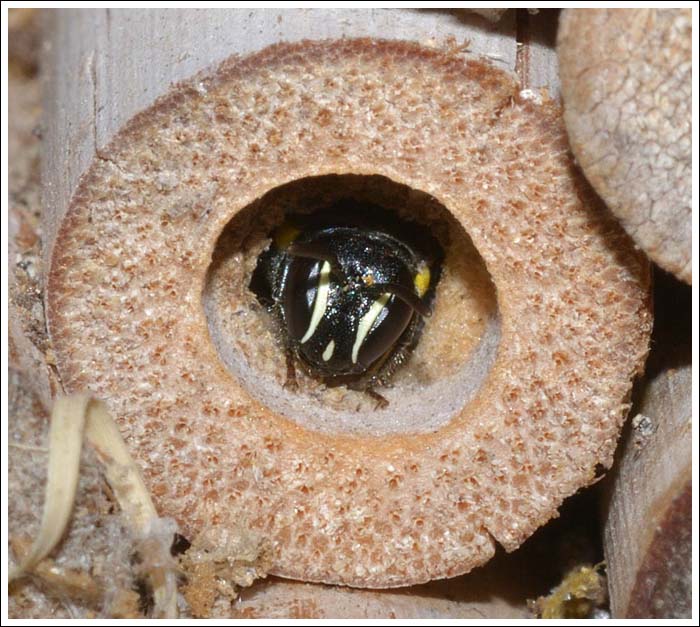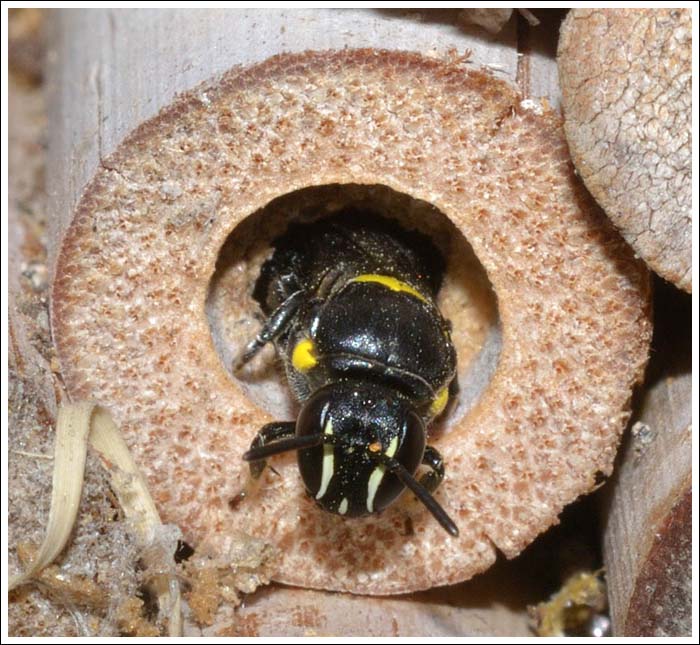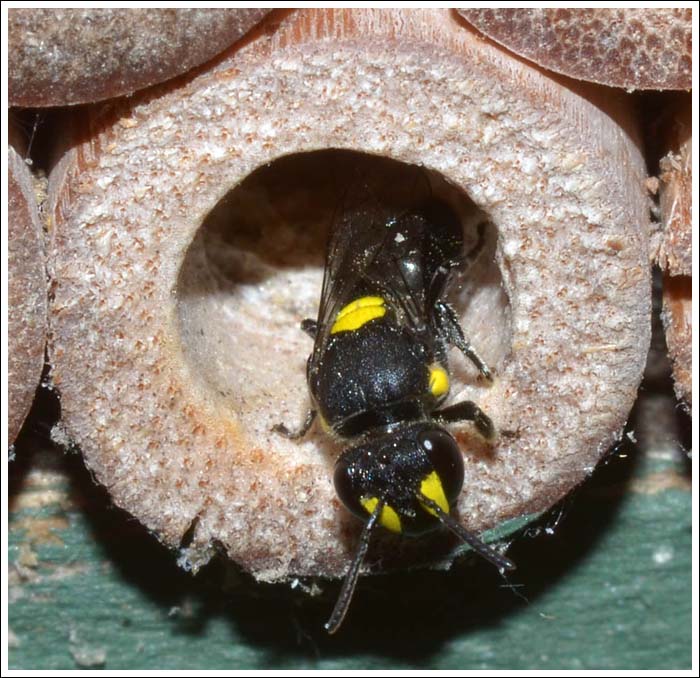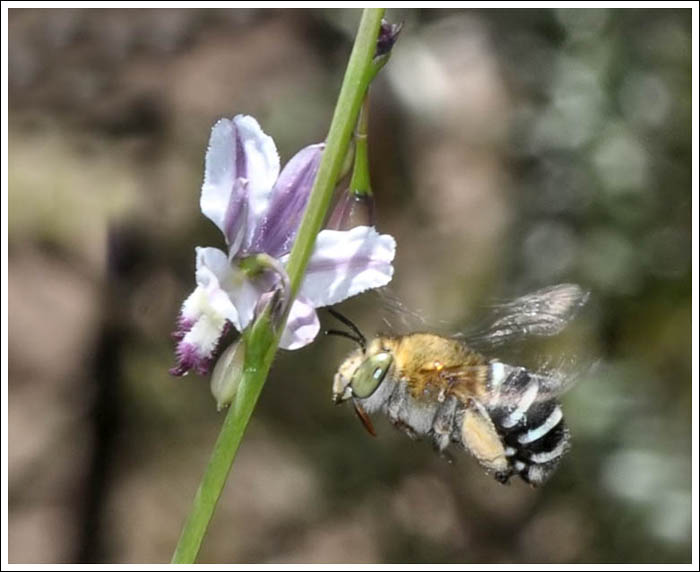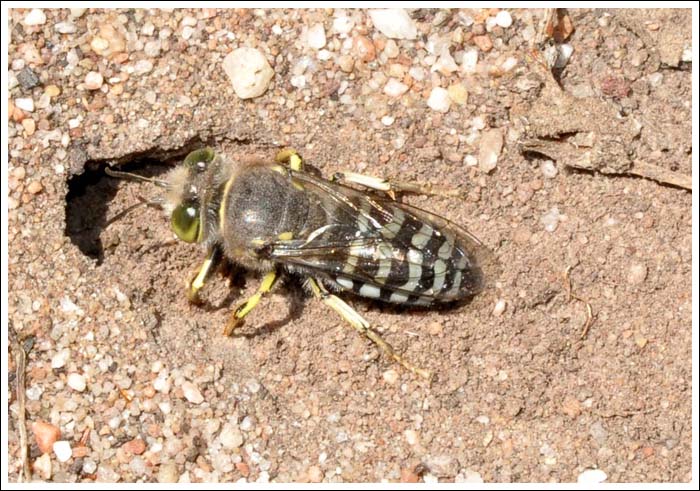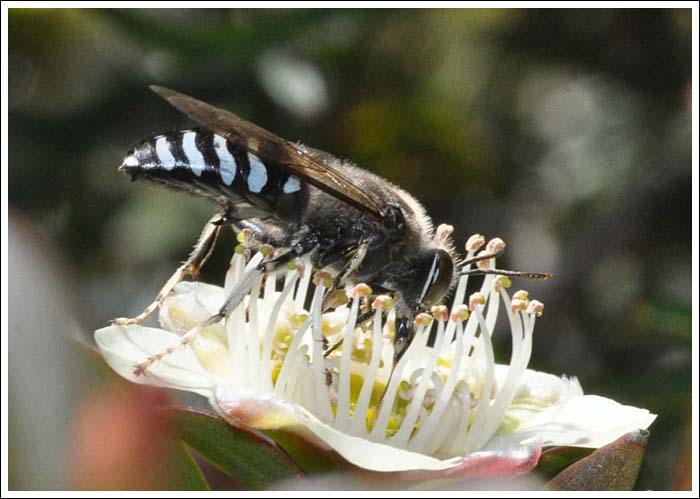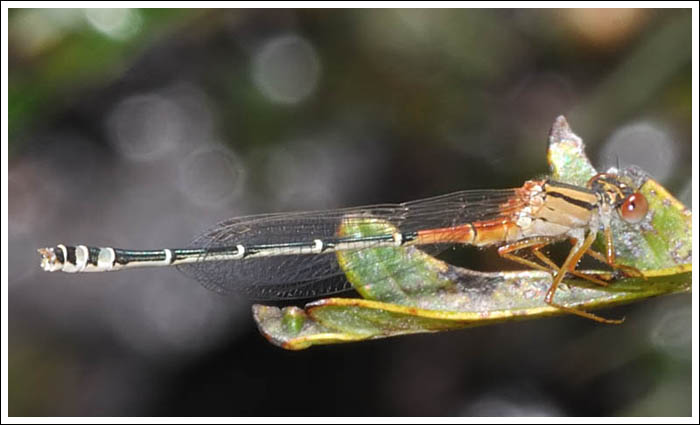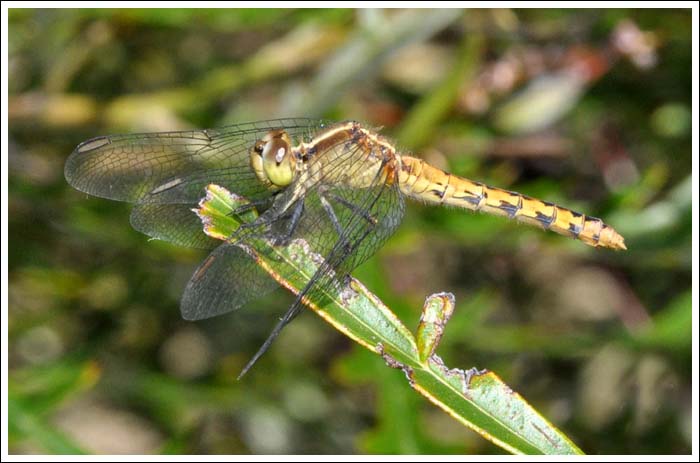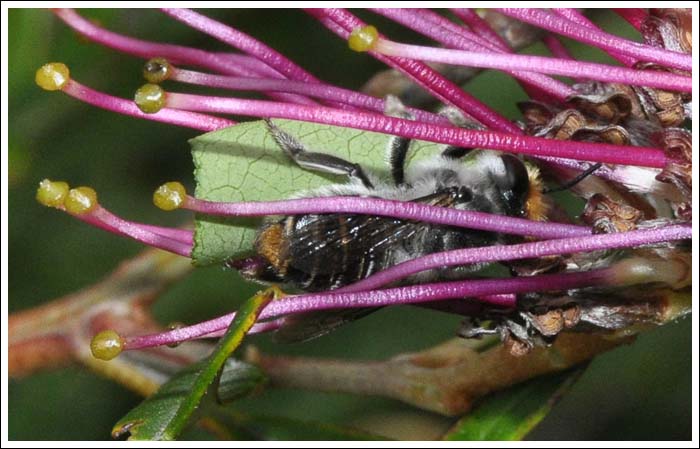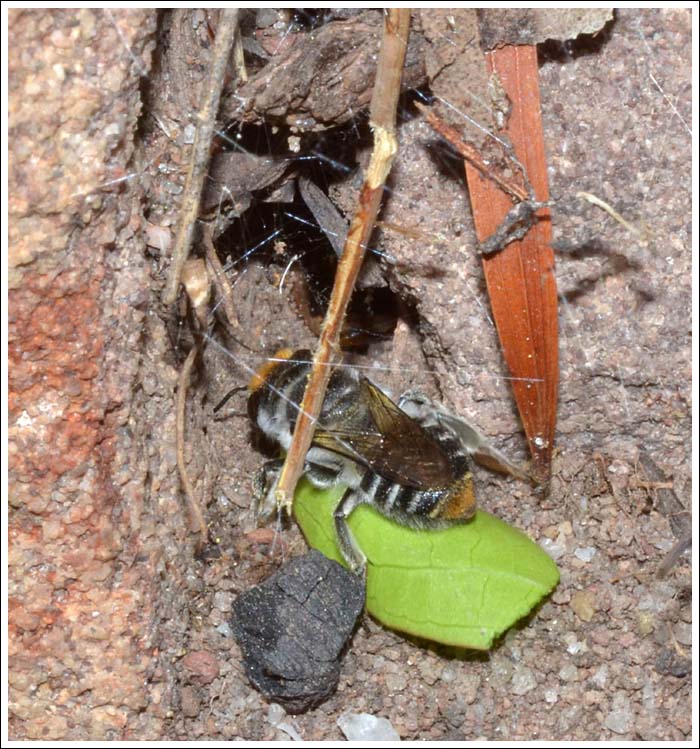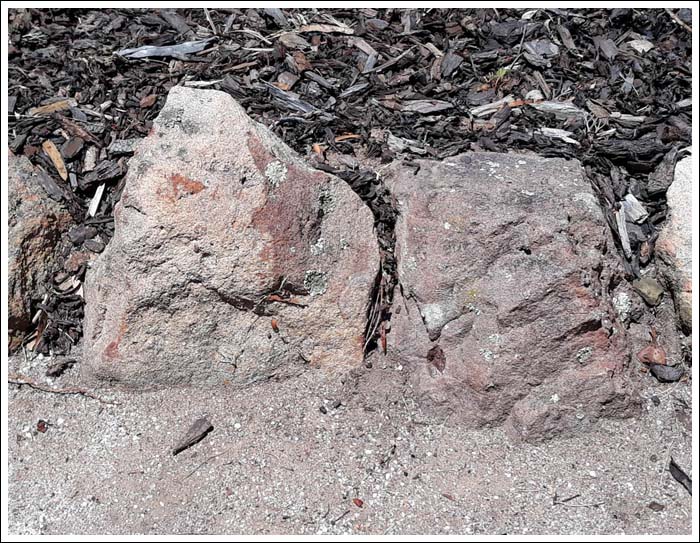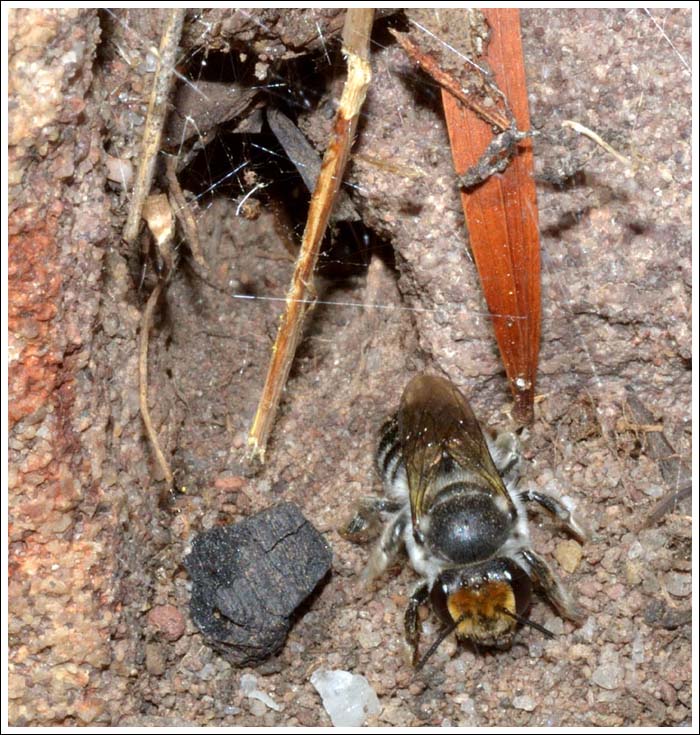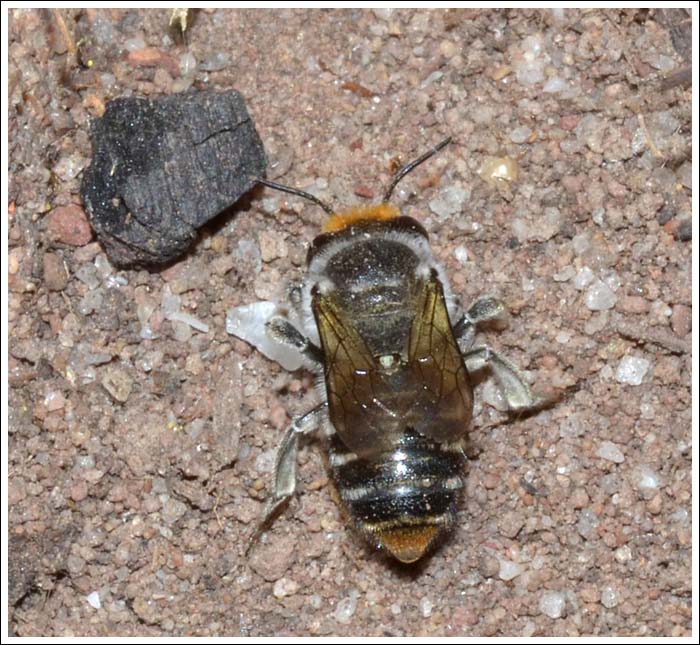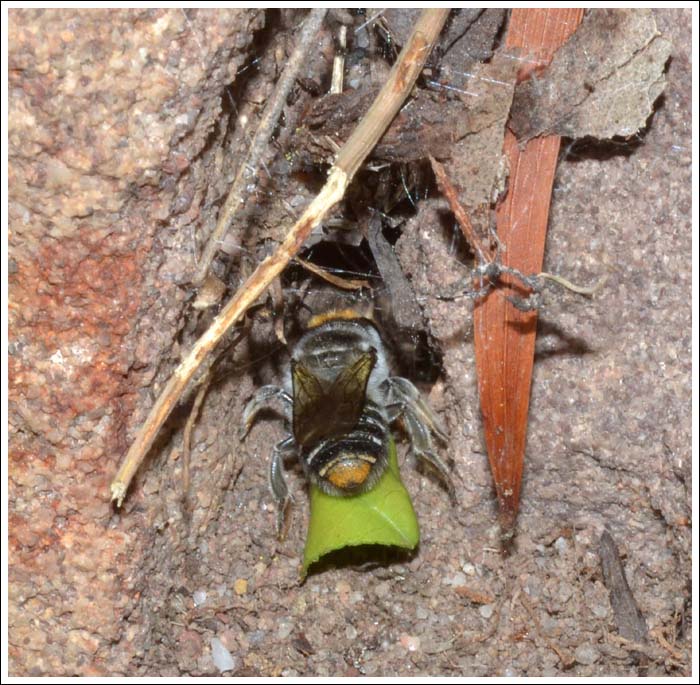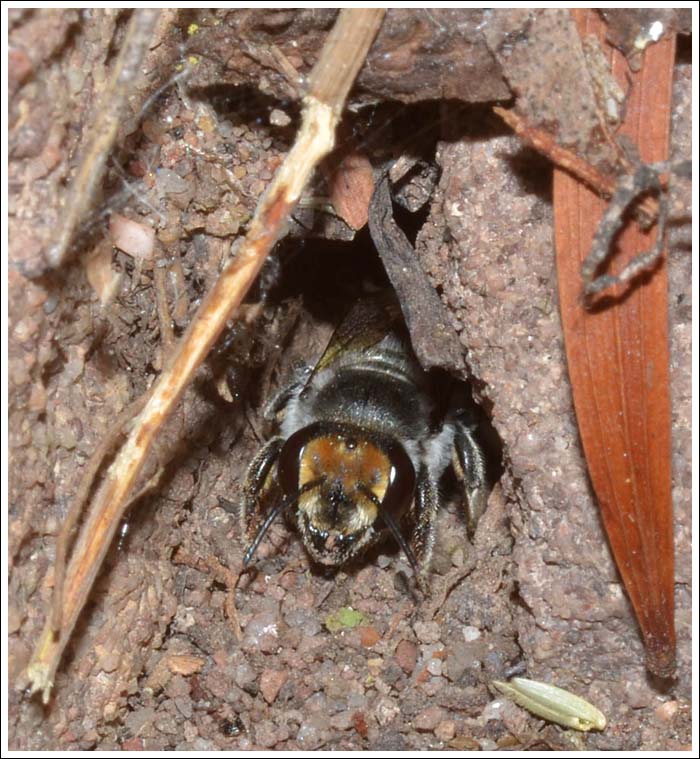The bee house has seen activity with masked bees utilising the bamboos for nest sites. Photographs taken on different days revealed that two species of Hylaeus are involved.
Hylaeus nubilosus.
Hylaeus euprosopis.
A female Blue-banded Bee, Amegilla cingulata has also made an appearance, visiting the Derwent Speedwell and Vanilla Lily for pollen.
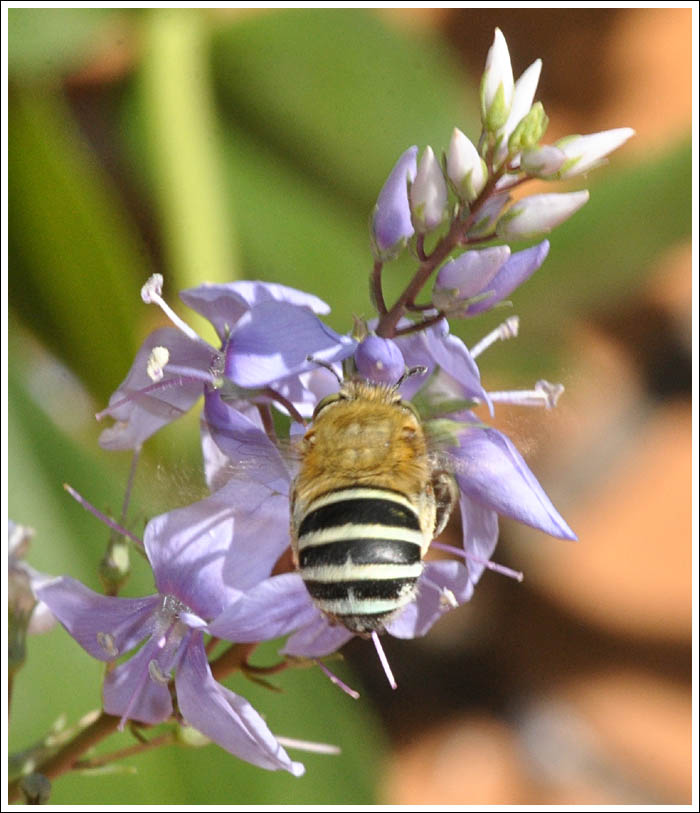
With warmer weather here the sand wasps, Bembix species are about in numbers, digging nest holes and feeding on nectar from the Leptospermum macrocarpum. Although dripping with nectar these flowers are not visited by honey bees that are busy in the adjacent grevillea. Apparently the nectar is not to their liking, although the occasional native bee will partake.

Odonata too are starting to show up.
Xanthagrion erythroneurum, the Red and Blue Damsel.
Diplacodes melanopsis, the Black-faced Percher, female.
And to conclude, a first record for the garden, Maratus pavonis.
Most images will enlarge with a click, mouse over to check.

